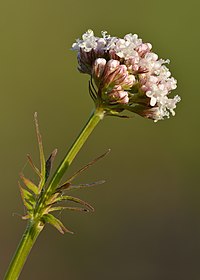
Photo from wikipedia
The level of potentially toxic elements (PTE) in phytopharmaceuticals can be a potential threat to human health through the food chain. The traditional herbal medicinal products (THMPs) with the marshmallow… Click to show full abstract
The level of potentially toxic elements (PTE) in phytopharmaceuticals can be a potential threat to human health through the food chain. The traditional herbal medicinal products (THMPs) with the marshmallow root (Althaea officinalis L., radix), which we can find in European pharmacies, are widely used among the European population. However, recently, voices have been heard in the public about alleged PTE occurrence. In this article, the levels of Pb and Cd impurities were measured in samples of THMPs with marshmallow root available in Polish pharmacies (n = 10). Our proposed toxicological approach was based on two important issues. The first was PTE levels (Pb: 1.60–6.80 μg/L and Cd: 0.80–3.81 μg/L presented as raw results) in comparison with the permissible limit set by FAO/WHO for medicinal herbs (10,000 µg/kg for Pb and 300 µg/kg for Cd) and also ICH Q3D guidelines (0.5 μg/g for Pb and also Cd). The second was the estimation of exposure of investigated PTE in a single dose and daily dose for each THMP. It should be noted that the content of analyzed heavy metals in a single dose of analyzed products was very low, and hence is not a threat for patients. The obtained daily intake of heavy metals impurities in comparison with PDE values confirms the safety of all analyzed phytopharmaceuticals (all of the samples meet the standards of the ICH Q3D guideline). It can be summarized that each of the analyzed THMP with marshmallow root available in Poland are safe for the patients. Based on literature review, this article is the first study about heavy metals impurities level in final THMPs with A. officinalis L., radix (marshmallow root) available in European pharmacies.
Journal Title: Toxics
Year Published: 2022
Link to full text (if available)
Share on Social Media: Sign Up to like & get
recommendations!